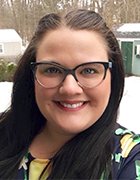Four tips to manage costs in a multi-cloud architecture
For some enterprises, it's difficult enough to manage and optimize the costs of a single cloud platform. And in a multi-cloud environment, those challenges only increase.
Multi-cloud deployments continue to grow in popularity, enabling an enterprise to pick and choose services based on cost, advanced features or other factors. Through the use of multiple cloud vendors, you can also reduce downtime risks and increase resiliency. But, without proper planning, these benefits come with a high price tag.
Review these top tips to manage IT costs -- and justify higher costs, when needed -- in a multi-cloud architecture.
Identify and reduce app integration costs
A multi-cloud architecture presents numerous application integration challenges, and poor workflow planning can drive up your bill. Cloud applications have many moving pieces, and in a multi-cloud model, it's possible that some app components will reside on different providers' platforms, as well as on premises.
To manage all this, first, create policies to determine the best platform on which to host an application component. Then, deploy the application, and make sure you have all the necessary IP address information to integrate that new hosting point into your overall application workflow.
One way to avoid high multi-cloud costs is to reduce the number of times an application component crosses a cloud platform boundary. To do this, view each instance of an application front end in the cloud as a separate application, and link each of them back to your data center via a virtual private network (VPN). This makes your data center a central hub of sorts and ensures all workloads only cross a single cloud boundary; it's a similar model to the use of a single cloud provider.
Automation tools can also help cut down on costly deployment mistakes.

Justify multi-cloud costs for high availability
Uptime is critical for many applications, but even a single cloud provider with 99.9% availability will have an average of nine hours of downtime per year. A multi-cloud architecture can increase uptime and availability, since, if one platform fails, an application can fail over to another. However, enterprises need to determine if the price of that redundancy is worth it.
With a multi-cloud architecture, it's possible to achieve an active-active redundancy strategy. However, this comes at a cost. Since enterprises will need to support more than one cloud platform, they'll need to expand their existing IT skill sets or hire more staff -- both of which cost money. A multi-cloud strategy might also mean you lose out on the volume discounts you can achieve with a single cloud provider.
To decide if multi-cloud is right for you, compare the costs of these factors to the amount you would lose during downtime.
Depending on the size of your organization, the hard and soft costs associated with downtime can cost millions of dollars. For SMBs, it might be more cost-effective to avoid multi-cloud and just fall back to manual redundancy processes.
Avoid steep networking fees
Most cloud providers charge you when traffic moves in and out of their platform, and those charges can increase greatly in a multi-cloud architecture. When you use multiple cloud platforms, it's likely that data will cross provider boundaries, and every time it does, you pay more in network traffic costs.
To reduce these network costs, review how your providers charge for traffic. Then, evaluate your workflows. Map them out to determine how you can incur the least amount of traffic charges. To take it one step further, assign providers their own address ranges in your VPN. If you use an IPv4 address, the Class A space 10.x.x.x enables you to create subnetworks for a cloud provider. This lets you identify and control where workflows and data might cross between multiple provider boundaries and where you might incur multiple traffic fees.
Evolve vendor, cost management strategies
When you choose to work with multiple cloud providers, you need to change the way you manage vendors and costs.
First, make sure you know your requirements for all the services you want in a multi-cloud architecture and how much those services cost before you start any negotiations. But don't make a decision purely based on cost. Sometimes, a more expensive service brings more value, and you might choose one vendor for its big data capabilities and another for its transactional processing features. Once you've made your choices, create policies that ensure your users access the right cloud service for the right purpose. For example, you might want to use one provider's object storage service to meet specific application requirements.
Also, use third-party cost monitoring and governance tools so admins can track cloud usage across providers. Automatic alerts and account shutdowns in these tools can keep enterprises from exceeding their budget. However, you still need to plan how much you want to budget for certain services and what metrics to monitor. These tools aren't valuable unless you have a well-defined plan and cost optimization strategy in place.







